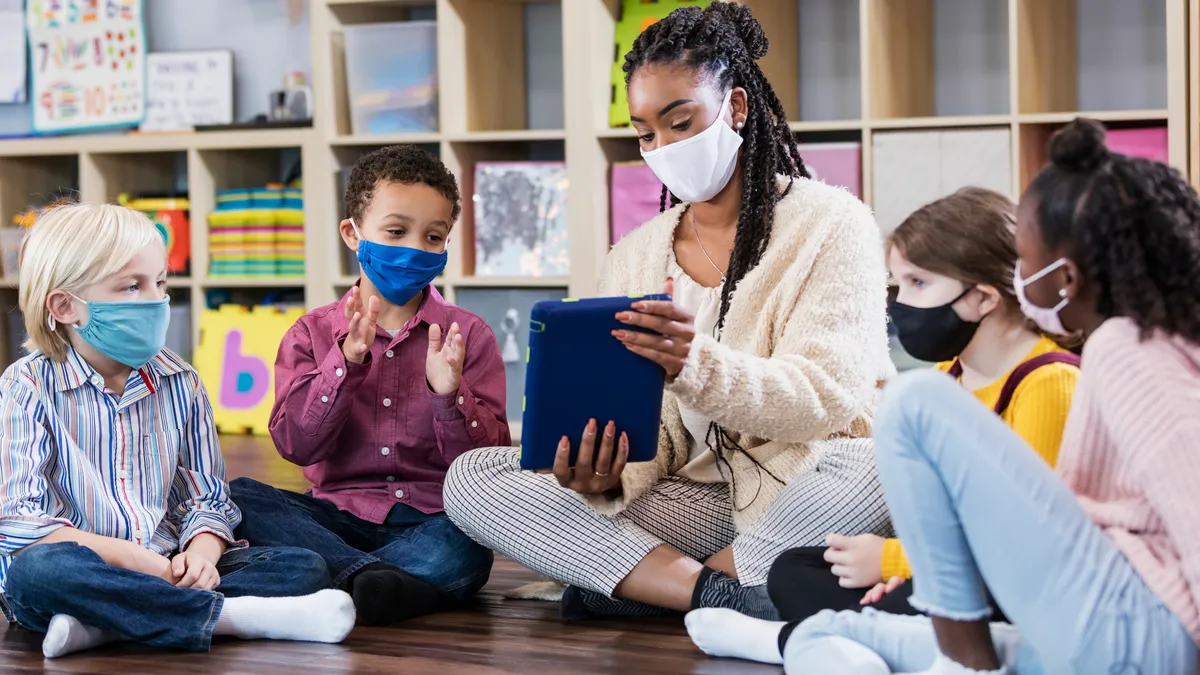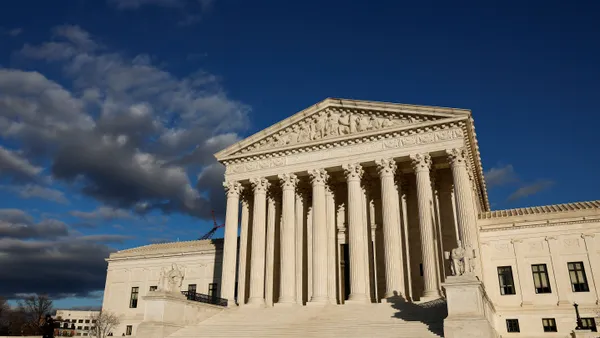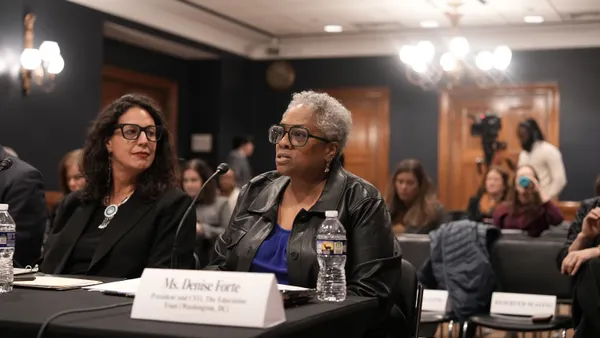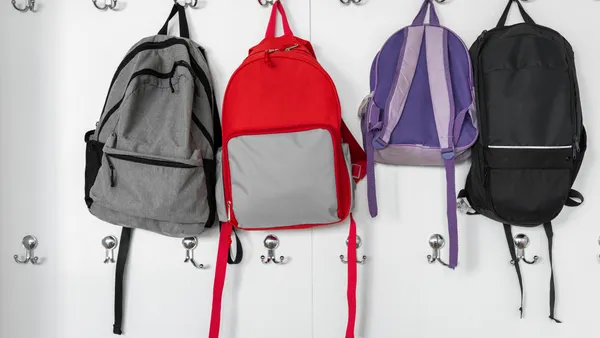Dive Brief:
- Schools no longer need to quarantine students who were exposed to COVID-19 but tested negative or use social distancing precautions, according to updated guidance issued by the Centers for Disease Control and Prevention on Thursday.
- CDC is also ending test-to-stay programs, in which exposed students and staff get tested for the virus and, if negative, can stay in the school building.
- Finally, the CDC now only recommends masking in areas with high levels of community transmission.
Dive Insight:
As school systems start the fourth school year affected by the pandemic, COVID-19 safety precautions have evolved from a strict approach in the early days to a more relaxed but cautious attitude.
The updated guidelines for individuals, communities and healthcare settings are part of CDC efforts to streamline pandemic safety recommendations that continue to emphasize vaccines for all, isolation for those who are sick, and mask wearing for those exposed to the virus, according to a news release.
“We’re in a stronger place today as a nation, with more tools — like vaccination, boosters, and treatments — to protect ourselves, and our communities, from severe illness from COVID-19,” said Greta Massetti, chief of CDC’s Field Epidemiology and Prevention Branch, in a statement.
“We also have a better understanding of how to protect people from being exposed to the virus, like wearing high-quality masks, testing, and improved ventilation," Massetti said. "This guidance acknowledges that the pandemic is not over, but also helps us move to a point where COVID-19 no longer severely disrupts our daily lives.”
The federal guidelines are only recommendations, and school COVID-19 safety policies are developed according to local, state and federal guidelines and requirements. Public opinion has also influenced protocols over the past few years, as some community members have pushed back against more restrictive masking, testing and vaccine measures.
School COVID-19 safety policies have also been influenced by litigation in some areas over the course of the pandemic.
What districts are doing
Many school districts didn't wait for the CDC guidance as they set protocols for the start of the 2022-23 school year. According to data services firm Burbio, 485 of the 500 school districts it tracks were not requiring masks as of Aug. 11. Eight districts require masks, and seven have a partial mask-wearing policy.
Examples of local policies include:
- Southeast Dubois County School Corporation in Ferdinand, Indiana. Schools will no longer be required to conduct contact tracing of close contacts of those who test positive, a school operations memo said. "Covid-19 has shifted from a pandemic to an endemic like other illnesses that we manage throughout the year such as the flu," the memo said.
- Stafford County Public Schools in Stafford, Virginia. Updated guidance for the new school year said social distancing and masks are no longer required. Cleaning is no longer required between classes, but will be conducted at the end of every day or when determined appropriate.
- Hondo Valley Public Schools in Hondo, New Mexico. This two-school district simply wrote on its website Aug. 3 that there are no COVID-19 restrictions at this time.
- Hacienda La Puente Unified School District in City of Industry, California. Masks will be required for staff and visitors indoors, but they are only "strongly encouraged" for students, according to an Aug. 1 memo by Superintendent Alfonso Jiménez.
A recent RAND Corporation survey found that most educators, especially those in urban districts, supported requirements for mask wearing, vaccines and other COVID-19 precautions.
But there was strong opposition to those policies in some communities, and many educators faced harassment due to pandemic restrictions, they said.
Some 37% of teachers and 61% of principals said they were harassed over COVID-19 policies or classroom policies about race, racism or bias during the first half of the 2021-22 school year, with harassment over safety protocols being more common in January when the survey was conducted.
"At this point in the pandemic we've learned a lot about how to keep kids safe and keep them in school," said Robin Lake, director of the Center on Reinventing Public Education, in an email "We need to follow that science and keep politics out of our schools. Clear federal and state guidance is essential to make that happen."
The ebb and flow of various COVID-19 variants also strained schools as safety policies changed depending on the local risk of infections. As infections rose over the 2021-22 school year, more students and staff had to quarantine, which contributed to lost instructional time.
Parents estimate their children lost a month of in-person instruction, according to a survey conducted by Public Opinion Strategies and Impact Research in February.










